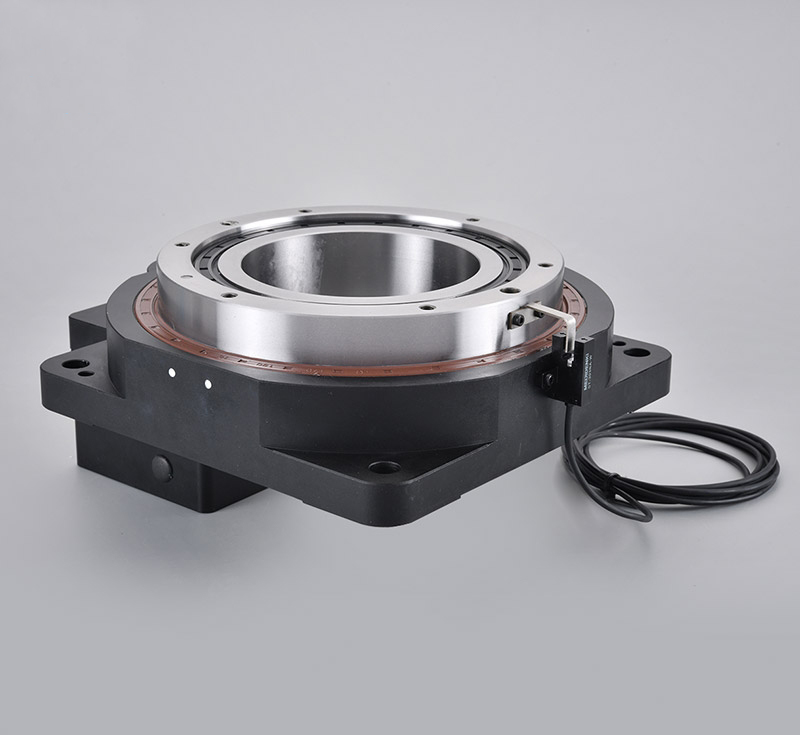Definition and Characteristics
Hollow rotary indexing gearbox is a device that achieves automatic angle adjustment through servo or stepper motor drive. Its core features include:
High efficiency: possessing efficient work performance.
High precision: capable of achieving high-precision rotational positioning with minimal error.
High rigidity: has high load-bearing capacity and stability.
High cost-effectiveness: Excellent comprehensive performance, suitable for various application scenarios.

application area
Hollow rotating platforms are widely used in the following fields:
Automated production line: used for precise rotation, positioning and conveying of materials.
Industrial robots: As the joint parts of robots, they are endowed with flexible rotational ability.
Numerical Control Machine Tool: Used for precision machining and indexing mechanisms.
Medical equipment: used for precision measurement and operation in the medical field.
Research institutions: used for precision measurement and research in laboratories.
Structural design and working principle
Hollow rotating platforms typically consist of a base, rotating platform, motor, and control system. Its unique hollow structure design makes wiring and piping more convenient, reducing interference and safety hazards caused by exposed lines. By driving with a motor, the hollow rotating platform can achieve high-precision rotational motion and transmit power to the rotating platform through a reasonable gear design, achieving reliable rotational action.
 Cheng Shen Precision Machinery (Shanghai) Co., Ltd.
Cheng Shen Precision Machinery (Shanghai) Co., Ltd.